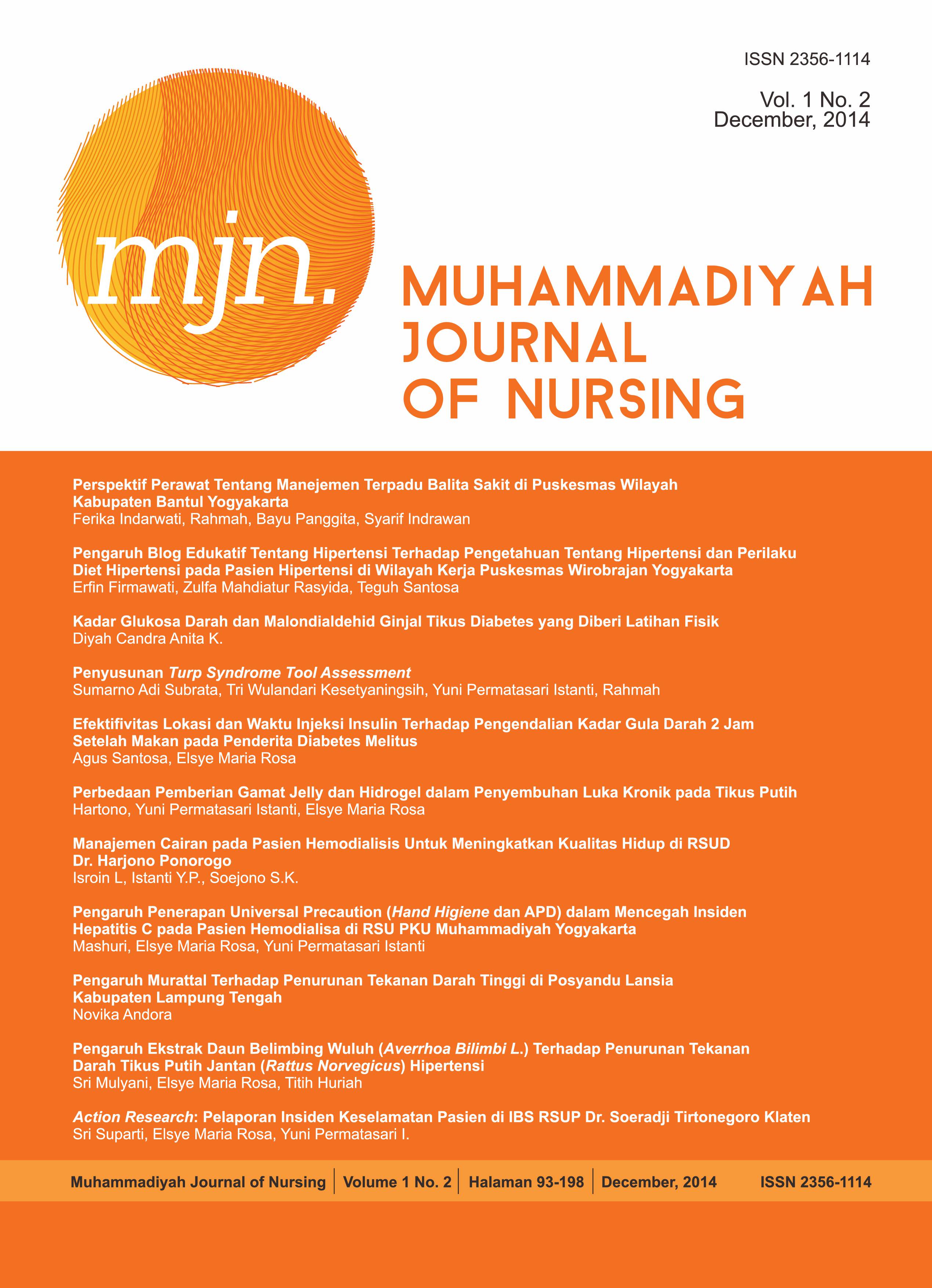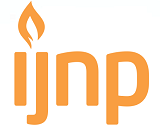Perbedaan Pemberian Gamat Jelly dan Hidrogel dalam Penyembuhan Luka Kronik pada Tikus Putih
DOI:
https://doi.org/10.18196/ijnp.v1i2.654Abstract
Background: Sea Cucumber contains many active compounds that have health benefi ts. The ability of therapeutic and medicine eff ects have associated with triterpen glycosides (saponin), chondrointin sulfates, glycosaminoglycan (GAGs), sulfates polysacarida, sterol (glycoside and sulfates) phenolics, cerberosides, lectins, peptides, glycoprotein, glycosphingolipids and essential fatty acids.
Objective: To compare the eff ectiveness of sea cucumber jelly and hydrogel in chronic wound healing in the white rats.
Method : The research was a quasi-experiment with post test design. The number of samples was 10 rats. The rats were divided into two groups: a group was given sea cucumber jelly treatment and the other group was given hydrogel treatment. Before given treatment, a 1x1 cm wound was made on each rats and then the wound was infected with E. Colli. Wound care was done in every 2 days.
Result: There was no signifi cant diff erence between the use of sea cucumber jelly and hydrogel in chronic wound healing in the white rats (p = 0,753). Based on the average of healing period, sea cucumber jelly gave better eff ect than hydrogel (wound with sea cucumber jelly treatment was healed 12 days, and hidrogel in 13 days). DESIGN assessment tool was used to assess the wound.
Conclusion: Based on the average of healing period, sea cucumber jelly gave better eff ect than hydrogel. Sea cucumber jelly could be to use as the alternatives dressing.
Keywords: chronic wound healing, dressing, sea cucumber jelly, hydrogel.
Downloads
Published
Issue
Section
License
License
Articles published in the IJNP (Indonesian Journal of Nursing Practices) are licensed under a Attribution 4.0 International (CC BY 4.0) license. You are free to:
- Share — copy and redistribute the material in any medium or format.
- Adapt — remix, transform, and build upon the material for any purpose, even commercially.
This license is acceptable for Free Cultural Works. The licensor cannot revoke these freedoms as long as you follow the license terms. Under the following terms:
Attribution — You must give appropriate credit, provide a link to the license, and indicate if changes were made. You may do so in any reasonable manner, but not in any way that suggests the licensor endorses you or your use.
- No additional restrictions — You may not apply legal terms or technological measures that legally restrict others from doing anything the license permits.
Copyright
Authors who publish with IJNP (Indonesian Journal of Nursing Practices) agree to the following terms:
- Authors retain copyright and grant IJNP (Indonesian Journal of Nursing Practices) the right of first publication with the work simultaneously licensed under an Attribution 4.0 International (CC BY 4.0) that allows others to remix, adapt and build upon the work with an acknowledgment of the work's authorship and of the initial publication in IJNP (Indonesian Journal of Nursing Practices).
- Authors are permitted to copy and redistribute the journal's published version of the work (e.g., post it to an institutional repository or publish it in a book), with an acknowledgment of its initial publication in IJNP (Indonesian Journal of Nursing Practices).















